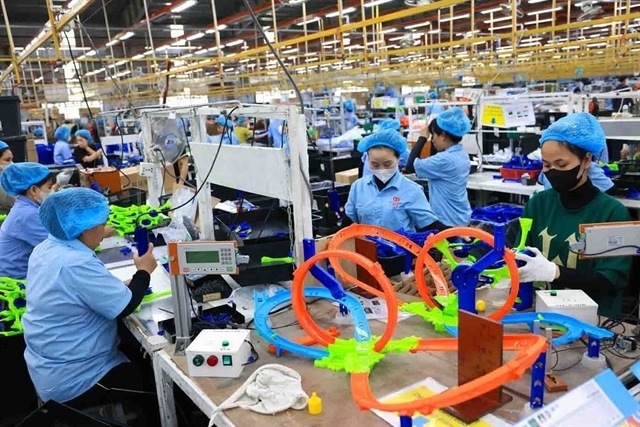Fate of Vietnamese shipbuilder, once collapsed, remains uncertain
Fate of Vietnamese shipbuilder, once collapsed, remains uncertain
Despite being expected to start operating at a profit after three years of operation, the future of a company formed out of the collapse of a beleaguered Vietnamese shipbuilder remains uncertain.

Subsidiaries of the Shipbuilding Industry Corporation (SBIC) continue to incur steep losses, while the company itself is still burdened by heavy debts left by its collapsed precursor Vinashin.
In 2011, state-owned shipbuilding firm Vinashin officially collapsed. Two years later, the company was ‘revitalized’ and renamed SBIC, with an optimistic expectation that the new company would stop making a loss and fully recover after five years.
The reality today however is that many of SBICs subsidiaries are operating at a fraction of their actual capacity, and the parent company reported more than VND5.4 trillion (US$237.89 million) in losses for 2016.
Loss after losses
At the SBIC-owned Nam Trieu Shipyard in the northern city of Hai Phong for instance, most of the equipment and machinery have begun rusting.
The company is capable of building massive vessels with loading capacity’s of up to 70,000 metric tons, but there is currently little work to do.
The shipbuilder’s workforce has been cut to 700 from the more than 7,000 it previously employed due to “volatility in the ocean transportation industry,” according to Nam Trieu’s deputy general director Vu Thanh Tung.
Tung has made no secret of the fact that the company has so far received no orders from foreign customers.
“We are building a 56,000 ton ship for one local customer as well as some smaller coastguard vessels,” he said.
Nam Trieu general director Nguyen Van Hoai admitted that the company had incurred losses during 2016 but refused to disclose either its losses or debts.
Located down the road from Nam Trieu is the Pha Rung Shipyard, another SBIC subsidiary that is maintaining its operation by repairing ships rather than building new vessels.
One Pha Rung executive admitted that the company’s debt amounted to thousands of trillions of dong. (VND10 trillion = $440.05 million)
“Nothing seems to change after all these years of restructuring following the Vinashin collapse,” the anonymous executive said. “Based on our debts, one might say that the company is already dead.”
Another company under the SBIC umbrella, Song Cam Shipyard, logged a modest VND448.42 billion ($19.75 million) in turnover during 2016, a 34.2 percent slump on the previous year.
Parent company SBIC said it delivered 198 finished products during 2016, with total earnings of VND6,422 billion ($282.91 million), leaving it way behind target.
SBIC said it could have reported profit in 2016 had the debts left by Vinashin been excluded from its bottom line, however this is not in line with current financial regulations.
Consequently, the company’s accumulated losses have so far amounted to VND5,405 billion ($238.11 million), with annual losses in the trillions of dong each year for the last four years. (VND1 trillion = $44.05 million).





















